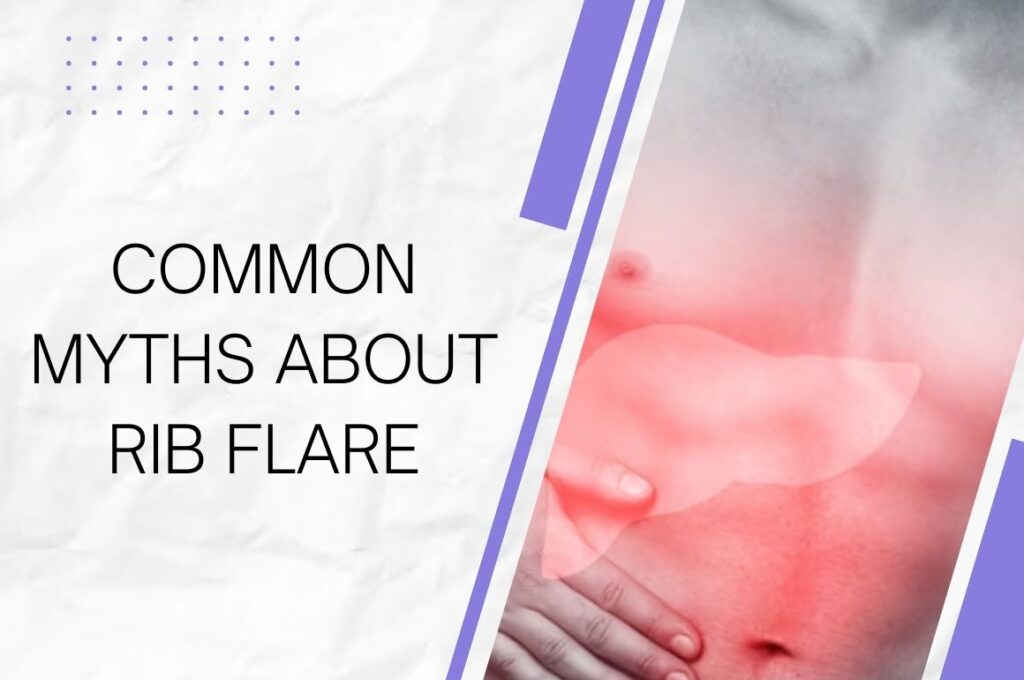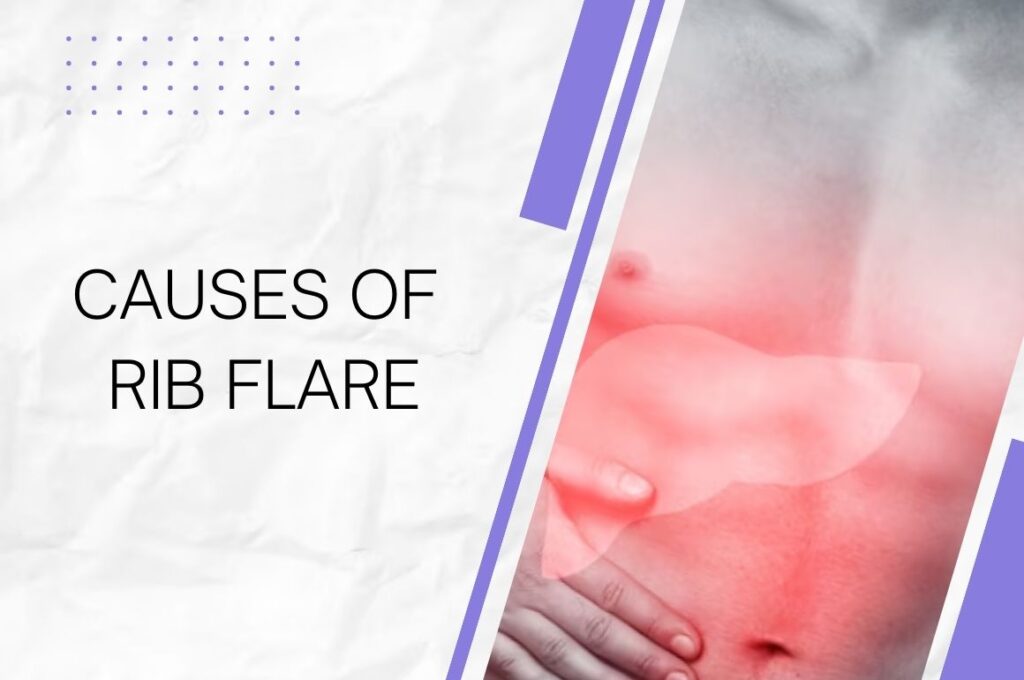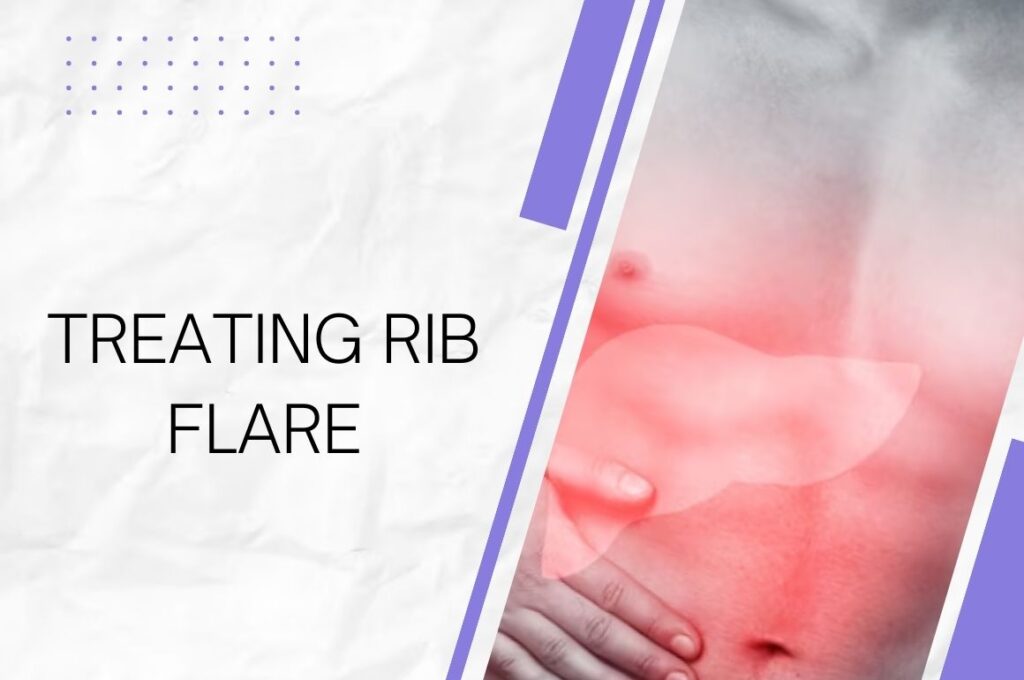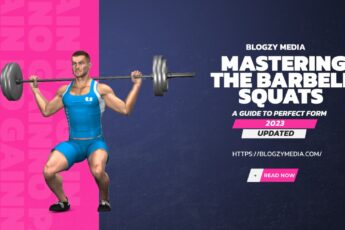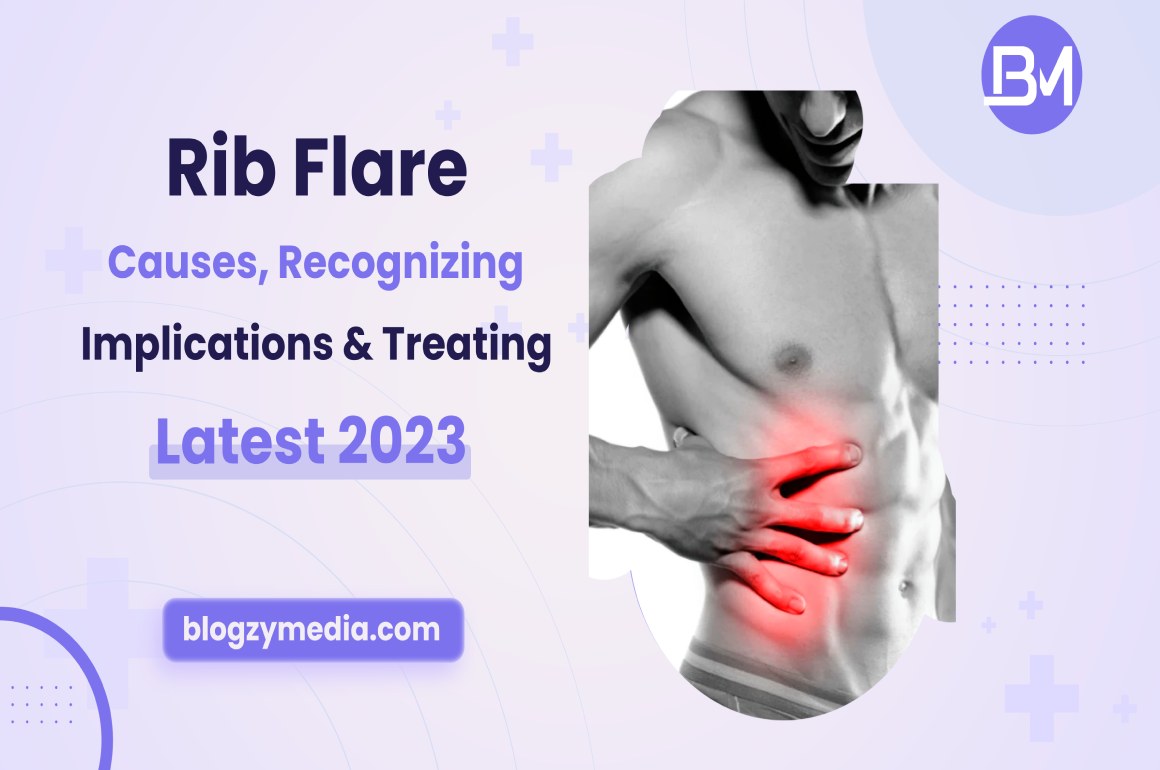
Rib Flare: Causes, Recognizing, Implications & Treating (Latest)
Introduction
Rib flare refers to a posture condition in which one or both sides of your lower ribs tend to protrude forward. It creates a visible bulge while widening your lower chest area.
Although it is generally harmless, it may contribute to specific musculoskeletal issues. The altered alignment of the rib cage can lead to health issues, such as postural imbalances, lower back pain, and limited mobility in the thoracic region.
In this blog, we’ll explore everything you need to know about the condition, including its causes, how to recognize it, its implications, various testing methods, exercises, and treatments available. Thus, the article aims to offer you a comprehensive understanding of this particular anatomical concern.
What is Rib Flare?
The term ‘flared ribs’ is used to state a posture condition that is easily identifiable when your bottom ribs protrude forward. Also, this condition is more prevalent on the left side of the body where more of your internal organs are present.
This anatomical context involves the ribs, the thoracic cage, muscles, and connective tissues surrounding these structures. The shape and orientation of the ribs are essential to the entire form and functionality of the thoracic cage.
So what effect does it has on the rib cage? First and foremost, it can result in an improper alignment of the spine. When the lower ribs are pushed outwards, they can pull the spine out of its natural position.
Rib Flare can cause a series of issues, for instance, lumbar pain, slouching, or perhaps difficulty breathing. It can also affect the rib cage’s shape. When the lower ribs protrude outwards, they can create a wider, more rounded shape to the rib cage.
This posture is also known as the ‘barrel chest’ appearance in severe cases, where the rib cage becomes almost cylindrical. Then, it can also put additional stress on the muscles of the rib cage itself.
The muscles attached to them have to work harder to stabilize the rib cage and keep it aligned with the spine. This leads to aches and pains in the rib cage muscles, particularly on the back and the sides of the body.
Common Myths
Myth #1: Rib flare is caused by poor posture
While it’s true that bad posture can exacerbate the appearance, it’s not the root cause. This condition is caused by several reasons, namely genetics, bone structure, and muscle development. So, the shape of the rib cage is not something that you can control through posture alone.
Myth #2: always a sign of poor health
While it can be associated with certain health issues (such as scoliosis or kyphosis), it’s not always an indicator of an underlying problem. Many people with flared ribs are perfectly healthy and simply have a unique skeletal structure.
Myth #3: only a concern for women
This is a myth that largely stems from societal pressure on women to have a certain body shape. However, flared ribs are not gender-specific and can affect anyone. Men are often more likely to have visible flared ribs due to broader shoulders and a larger rib cage.
Causes of Rib Flare
#1. Muscular imbalances and weaknesses
Lengthening or slackening of the lower abdominal muscles can also lead to this issue. It also stems from your poor posture. Your weak abdominal muscles will also be responsible for tilting the rib cage inwards and downwards in a more neutral position.
Weak abdominal and gluteal muscles, combined with tight hip flexors and chest muscles, can create an imbalance that pulls the pelvis into an anterior tilt and causes the lower ribs to flare outward.
#2. Poor posture and its contribution to rib flare
Bad posture isn’t the complete reason, but it can be a contributing factor for the same. Bad posture, including slouching or hunching forward, often leads to an anterior pelvic tilt.
This postural misalignment causes the pelvis to tilt forward, which results in an excessive arch in the lower back. As a consequence, the rib cage is pushed forward, leading to the flaring out of the lower ribs.
#3. Impact of Pregnancy and hormonal changes
During pregnancy, hormonal changes can affect the ligaments and joints in the body, including those in the rib cage. However, these hormonal changes can also influence the rib cage, leading to increased mobility and the potential for an outward expansion of the lower ribs.
As the uterus expands, it pushes against the diaphragm and the lower ribs, causing them to flare outward.
Recognizing Rib Flare
#1 Physical signs and symptoms
Although the symptoms and physical signs could vary from person to person, there are some noticeable signs for the same. The visible protrusion of the lower ribs is one such symptom.
Some individuals may experience discomfort or pain in the lower back, as well as muscle imbalances or weakness in the core and back muscles. Breathing difficulties or restricted mobility in the thoracic region can also be present.
It is important to note that the severity of symptoms can vary, and individuals may experience different combinations of these signs and symptoms associated with flared ribs
#2. How to differentiate rib flare from other similar conditions
Fortunately, flared ribs are easy to identify. Still, some other conditions might be confused with the bad posture of flared ribs. However, it is important to differentiate it from conditions like pectus excavatum (sunken chest) or pectus carinatum (protruding chest).
In the pectus excavatum, the sternum and adjacent ribs sink inward, creating a concave appearance in the chest. Pectus carinatum, on the other hand, involves the protrusion of the sternum or upper ribs outward.
#3. Importance of consulting a healthcare professional for an accurate diagnosis
Consulting with a healthcare professional, such as a physician or physical therapist, can provide a more accurate diagnosis and help differentiate it from similar conditions through physical examinations, imaging studies, and a comprehensive evaluation of the individual’s medical history and symptoms.
Potential Health Implications of Rib Flare
#1. Effects on Breathing and lung capacity
The range of motion of the diaphragm gets limited with the outward protrusion of the lower ribs. As a result, the diaphragm may not be able to fully contract and descend, reducing the amount of air that can be drawn into the lungs during inhalation. This can lead to shallow breathing and decreased lung capacity.
#4. Psychological effects, such as body image concerns and self-confidence
The visible protrusion or widening of the lower ribs may cause individuals to feel self-conscious about their appearance. They may experience body image concerns, feeling insecure or dissatisfied with the way their chest and midsection look.
It’s important to know that it doesn’t define worth or identity. Developing a positive self-image, focusing on overall health and well-being, and engaging in activities that promote self-confidence can all contribute to a healthier mindset and improved psychological well-being.
Treating Rib Flare
#1 Postural corrections and exercises to improve rib alignment
We have to consider the specific body positions most advantageous for the rib flare condition. So, it’s far better if you make an effort to correct your bad posture. And, take it as the very first step in treating your flared ribs.
With regards to exercises, you can begin by loosening up your tight lats with the foam roller. Bad posture or sitting all day long can also lead to tight lats. Doing planks is another best exercise to treat this condition.
#2. Strengthening exercises for the muscles around the rib cage
You can go for arm raise exercises for stretching the muscles around the rib cage. Side stretch, chest stretch, thoracic spine rotation, and child’s pose are some other exercise recommendations for the same.
#3. Stretching and mobility exercises to alleviate muscle tension
Shoulder blade squeezes are one of the best exercises to alleviate muscle tension. Stand or sit with appropriate posture. Squeeze your shoulder blades together like you’re pinching a pencil.
Hold for 5-10 seconds and then release. Repeat for 10-12 repetitions, focusing on activating the muscles between your shoulder blades.
Rib cage release is also the preferable exercise to treat this condition. Place a foam roller or rolled-up towel under your mid-back, aligning it with the area of rib flare.
Gently roll up and down, allowing the foam roller to massage the muscles along your rib cage. Pause on any tender spots and take deep breaths to encourage relaxation. Perform for 1-2 minutes.
Seeking Professional Help
Consulting a healthcare professional or physical therapist is essential when seeking treatment for flared ribs. These professionals have the expertise and knowledge to accurately assess the severity of rib flare and identify any underlying causes or contributing factors.
Keep in mind that everyone’s circumstance is unique, and one person’s method may not work for someone else. Seeking professional guidance ensures that you receive personalized care and attention, optimizing your chances of achieving positive outcomes and minimizing the risk of complications.
Overall, consulting a healthcare professional or physical therapist is crucial for accurate diagnosis, personalized treatment planning, and ongoing support in managing flared ribs effectively.
What role do hormonal changes play in the occurrence of rib flare?
Hormonal changes, occurring during puberty, pregnancy, and menopause, impact bone and cartilage development. Elevated levels of estrogen and progesterone can affect ligaments and joints, potentially altering the structure of the ribcage. Additionally, hormonal shifts may contribute to changes in posture and muscle tone, influencing the alignment of the ribs. While the exact mechanisms are not fully understood, hormonal fluctuations play a crucial role in influencing skeletal and musculoskeletal development.
Conclusion
In conclusion, we have covered a comprehensive overview of rib flare, exploring its causes, recognition, and the importance of seeking professional guidance.
We have delved into the various exercises and stretches that can be incorporated into your routine to address flared ribs and alleviate associated symptoms.
Eventually, small changes and consistent efforts will result in significant results. Be patient with yourself and celebrate even the smallest achievements along your journey towards better rib alignment and overall health.
FAQs
Q.1 What is the fastest way to get rid of a rib flare?
As such, there is no quick way to cure this condition. You need to put in consistent efforts gradually and seek professional healthcare advice if things aren’t going well at your end.
Q.2 Is rib flare something to worry about?
It is not necessarily a cause for immediate concern. However, if it is accompanied by severe pain, discomfort, or difficulty breathing, then it’s crucial to seek medical attention promptly.
Ultimately, the level of concern regarding flared ribs depends on the individual’s specific circumstances and the impact it has on their well-being.
Q.3 How long does it take for a rib flare to heal?
It’s important to keep in mind that each person’s healing timeline may be different, and individual responses to treatment or exercises can vary.
Q.4 Can you feel Flared Ribs?
It’s important to note that while individuals can feel the physical effects of the condition, the severity of these sensations may vary among individuals.


